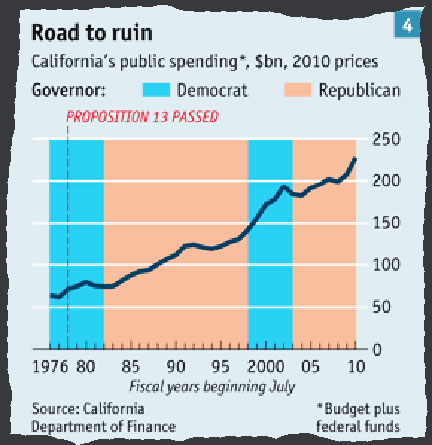A special report on the financial troubles of our fair state that appears in the current issue of the Economist opens with some strong analysis of the affect that Don Novey the longtime president of the prison guard’s union, has had on the state, and is something that every Californian should read.
Here are the relevant paragraphs:
DON NOVEY does not look like a typical Californian entrepreneur. The grandfatherly, fedora-wearing conservative began his career as a correctional officer at Folsom State prison in the 1970s. But he helped build one of the Golden State’s largest industries.
Thirty years ago, when Mr Novey became president of the California Correctional Peace Officers Association (CCPOA), only 2,600 members walked what he calls “the toughest beat in the state”, and there were only 36,000 inmates in California’s prisons. Now, as Barry Krisberg of Berkeley Law School points out, some 170,000 people are locked up there, and CCPOA has 31,000 members. From the air California can look like an archipelago of prisons.
Mr Novey made CCPOA a dominant force in state politics, and not just by dishing out political contributions in Sacramento, the state capital. He shrewdly formed an “iron triangle” with Republican lawmakers and prison-builders. And he gave it a cause: tougher sentencing for criminals. CCPOA sponsored the “three strikes” law, mandating life imprisonment for three serious felonies, and helped set up victims’ rights groups.
By the time Mr Novey gave up the CCPOA’s presidency in 2002, the state had built 21 new prisons. Some guards now earn more than $100,000 a year (with overtime). Mr Novey negotiated pensions of up to 90% of salary, with retirement starting as early as 50. To many of his members Mr Novey remains a hero—a man who provided good jobs and made them safer. And the taxpayer footed the bill.
Jerry Brown, the Democrat who was recently elected governor, faces a deficit of around $25 billion this year—bigger than the total budget in 1975. That was the year when Mr Brown in his younger “Governor Moonbeam” phase first ran the state. Back then California’s government was widely admired for its highways and its universities, and also as a font of political ideas both on the right (Reaganism) and the left (environmentalism). Now the roads and colleges are crumbling, even though total government spending in the state will reach $230 billion this year (see chart 4). Californian politicians get some of the lowest ratings in the country. Like a paranoid movie star, the state has kept on grasping at miracle cures—from Proposition 13, the tax-cutting ballot initiative, in 1978 to the election of Arnold Schwarzenegger, the cyborg-ex-machina, in 2003.
California is now widely studied as an example of what to avoid. Why is the home of Apple and Google so useless when it comes to running school districts or budgeting, and why have so many clever people settled for such a bad deal?
Why indeed?
On Wednesday, I was talking with someone who just came back from meeting with criminal justice reformers in Texas and she mentioned the fact that law-and-order TX is is managing some real transformation in its prison and parole system, and has saved billions of dollars as a consequence, while supposedly progressive California cannot seem to reform a thing when it comes to public safety issues. And the lack of reform is killing our state.
“Well,” said my conversational companion, “the big difference is, Texas doesn’t have the CCPOA.”
Right.

